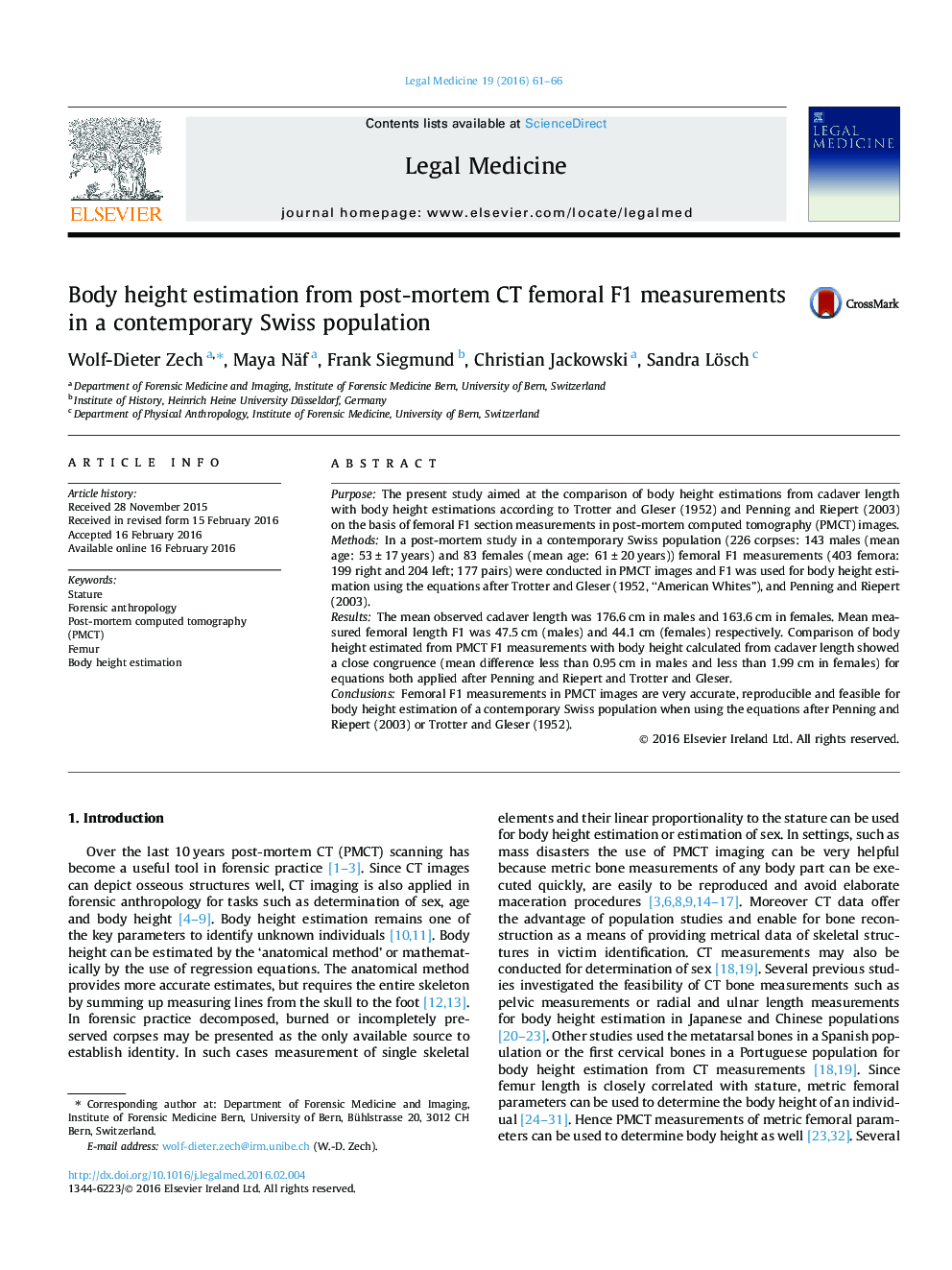| کد مقاله | کد نشریه | سال انتشار | مقاله انگلیسی | نسخه تمام متن |
|---|---|---|---|---|
| 103447 | 161380 | 2016 | 6 صفحه PDF | دانلود رایگان |
• Femoral F1 length was measured in PMCT in a contemporary Swiss population.
• F1 measurements in PMCT were very accurate and reproducible.
• Estimated body height from F1 showed close congruence to real cadaver length.
PurposeThe present study aimed at the comparison of body height estimations from cadaver length with body height estimations according to Trotter and Gleser (1952) and Penning and Riepert (2003) on the basis of femoral F1 section measurements in post-mortem computed tomography (PMCT) images.MethodsIn a post-mortem study in a contemporary Swiss population (226 corpses: 143 males (mean age: 53 ± 17 years) and 83 females (mean age: 61 ± 20 years)) femoral F1 measurements (403 femora: 199 right and 204 left; 177 pairs) were conducted in PMCT images and F1 was used for body height estimation using the equations after Trotter and Gleser (1952, “American Whites”), and Penning and Riepert (2003).ResultsThe mean observed cadaver length was 176.6 cm in males and 163.6 cm in females. Mean measured femoral length F1 was 47.5 cm (males) and 44.1 cm (females) respectively. Comparison of body height estimated from PMCT F1 measurements with body height calculated from cadaver length showed a close congruence (mean difference less than 0.95 cm in males and less than 1.99 cm in females) for equations both applied after Penning and Riepert and Trotter and Gleser.ConclusionsFemoral F1 measurements in PMCT images are very accurate, reproducible and feasible for body height estimation of a contemporary Swiss population when using the equations after Penning and Riepert (2003) or Trotter and Gleser (1952).
Journal: Legal Medicine - Volume 19, March 2016, Pages 61–66
